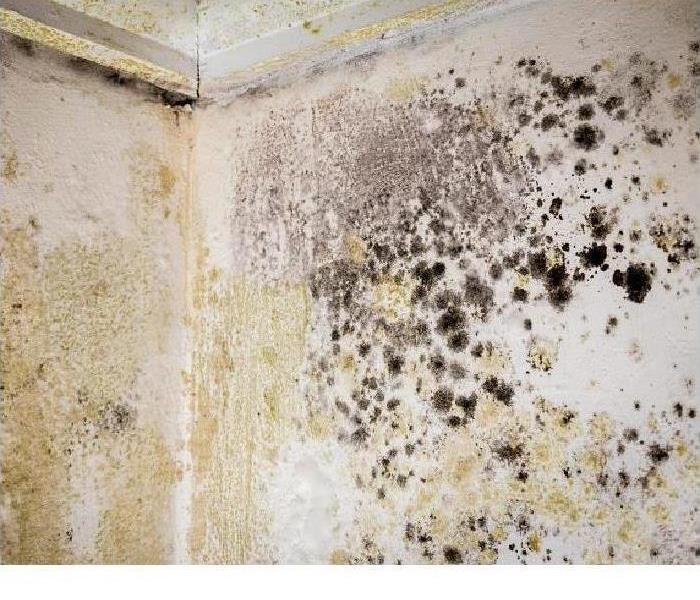Mold in the Desert?
11/9/2022 (Permalink)
Buildings in a Desert Climate Can Have a Mold Problem Too!
In the center of the desert, only a short distance from the Mexican Border the temperatures can get extremely high. One would think it’s too dry to have mold problems. Mold problems happen in our homes and commercial structures, and when they do, the problem will often spread quickly.
While many molds have adapted to low humidity and the elevated heat of the desert, these are not usually the molds that typically cause problems for building interiors or are problematic to people. While average outdoor humidity in the Yuma area is around 40% there are three months of the year when our desert has elevated humidity and is more supportive of all kinds of mold growth. For your information, molds that can cause health effects for people require relative humidity above 60%.
The so-called black mold, Stachybotrys, and others can threaten humans because they produce fine airborne spores that can quickly enter our respiratory system. These molds find enough locations in the desert with adequate moisture to support their growth and survival year-round and benefit from the Monsoon rain season. Trust us when we say, “airborne mold spores will find their way into wet or damp indoor environments.” Since these molds prefer 60% relative humidity (and above) and temperatures in the 70F to 85F range they will thrive in a damp indoor environment. Remember, most indoor environments are air-conditioned to this temperature range. Once an indoor environment is wet by a plumbing mishap or groundwater flooding, the interior humidity will quickly elevate to 60% RH and above. Unless HEPA filtration, the HVAC system will move spores throughout the ventilation system. Even if an HVAC system has advanced filtration to capture mold spores the system will blow and move the air in rooms and that can spread the spores around causing some of them to settle on wet portions of walls and other surfaces such as paper, cardboard, leather, and certain fabrics such as cotton. These surfaces named, are considered food sources for mold colonies.
Ideal Food Sources for Mold:
Paper
Cardboard
Softwood
Decaying food
Leather
Cotton fabric
As we have explained, mold can indeed become a problem in desert community homes and buildings just like it can become a problem in a temperate or tropical climate. The reason, no matter where we live, our homes and their interior atmosphere are similar and plumbing leaks, water flooding, and other issues can quickly raise indoor humidity to a level where mold can grow and spread spores.
If you suspect your home or building has a mold problem, please call SERVPRO of El Centro and Salton City. We are always happy to talk with you and/or make a site visit. If remediation services are required, we may introduce you to an Industrial Hygienist (third party) who can provide a written scope about the remedy. SERVPRO understands how to safely remove mold by following EPA and OSHA guidelines.

 24/7 Emergency Service
24/7 Emergency Service
